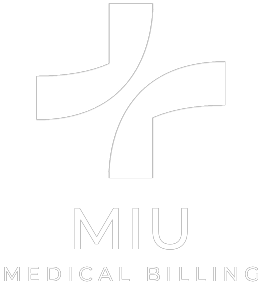Introduction
Healthcare professionals often fail to mutualize when it comes to the differentiation between medical billing codes 76815 and 76817 ultrasound codes. Although these codes are comparable, they are not interchangeable, and each has different reimbursement consequences. These codes differ in meaning; to correctly apply them in billing and documenting patients, one must learn the difference. Code 76815 usually implies a limited or a follow-up ultrasound, while code 76817 means a transvaginal ultrasound examination.
Basic Concepts Of Medical Billing 76815

CPT 76815 billing guidelines are associated with the limited ultrasound examination of the pregnant uterus. Doctors and other health care practitioners carry out a limited ultrasound examination of a pregnant uterus as a preliminary inspection or after a previous complete examination. This code is used during the focused assessment to address specific issues, such as fetal position or heart rate confirmation. On the other hand, CPT code 76817 is used for Transvaginal sonographic examination of the gravid uterus, which is helpful during early pregnancy or when the abdominal sonogram is inadequate.
Anatomical Focus and Procedure Differences
When implementing the medical billing 76815 code, doctors do an abdominal ultrasound, giving a more general view of the pregnancy than a transvaginal ultrasound. The 76817 code, on the other hand, takes a path through the vaginal, through which a transducer is placed to capture images of the pelvic region in high-def. This 76816 CPT code comes in when there are multiple gestations since the procedure involves detailed fetal anatomic examinations to differentiate them from 76815 and 76817.
Considerations of time and complexity
Those practicing must realize that medical billing code 76815 typically refers to a less extensive evaluation that lasts about 15 minutes. The 76817 procedure takes more time, usually 30 minutes or more, because of the overall approach in its implementation. The CPT 76816 billing guidelines describe another unique service of performing first and subsequent gestation detailed anatomic examination, which differs in time and work from 76815 and 76817.
Documentation Requirements
The assessment of 76815 in medical billing requires practitioners to annotate the reason for the limited ultrasound and any findings. The 76815 and 76817 CPT codes meet different documentation standards. Although 76815 involves a description of only a few items, 76817 requires a detailed account of transvaginal findings with an adequate description of the visualized structures involved.
Reimbursement Considerations
Insurance providers include 76817, with frequency limitations and a significantly lower reimbursement rate than med billing code 76815. Understanding the 76816 CPT code description is also essential, especially regarding reimbursement when working with multiple gestations. A practitioner should check the coverage policies since some insurance companies may have specific guidelines regarding each code.
Clinical Scenarios and Code Selection
Medical billing code 76815 or 76817 depends on several clinical considerations. Morphological 76817 can be used in early pregnancy assessment due to its better visualization, while 76815 is suitable for later pregnancy analyses. CPT 76816 is utilized only for detailed anatomic examinations in multiple gestations, and the proper use of each code should be well thought out.
Technology Implications and Instruments
It is also evident that the equipment needed for the medical billing code 76815 procedures is not the same as that required in the 76817 examination. While 76815 employs typical abdominal ultrasound transducers, 76817 involves female internal transducers. Healthcare facilities must be sure of the right technology for these different types of ultrasonic scanning, which affects the possibility of billing the service and giving suitable care options to clients.
Compliance and Auditing Practices

Periodic scans of a particular medical billing code, particularly 76815, enhance compliance with billing regulations in healthcare provision. Healthcare facilities should be able to track the use of codes 76815 and 76817 and check to ensure appropriate use. As with the 76816 CPT code, it is also essential to pay close attention during audits due to the issues arising about multiple gestations that need to be reviewed about the specific application of this code, as there will be issues with documentation and justification surrounding the code.
Conclusion
Medical billing codes 76815 and 76817 are similar and confusing when used in billing and documentation of patient care. Knowledge of the individual uses associated with each code regarding documentation and reimbursement possibilities makes managing the bewildering area of medical billing less stressful. Of course, the correct choice of codes is essential not only from the point of view of reimbursement but also from the point of view of maintaining accurate medical records and quality patient care.




